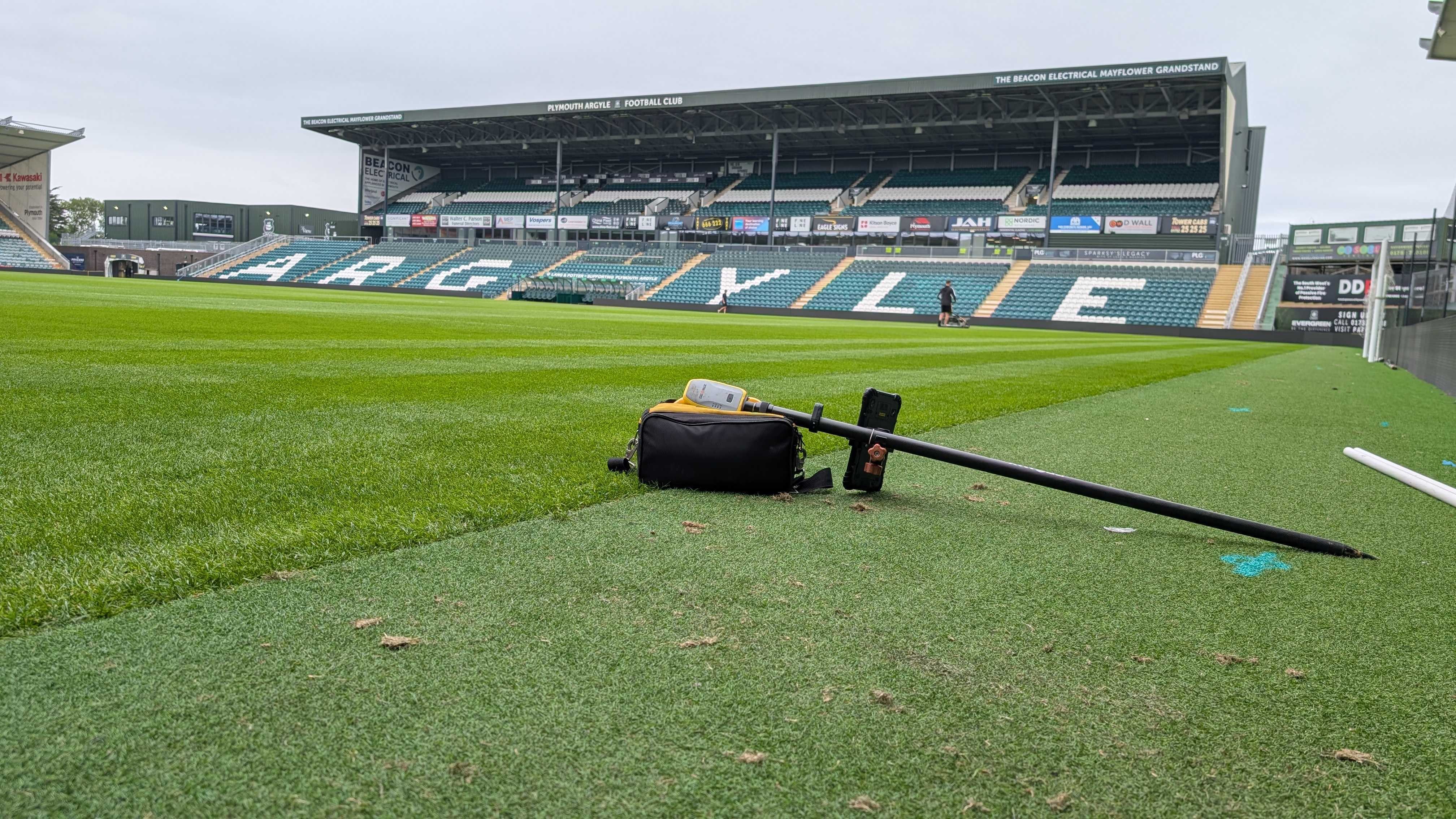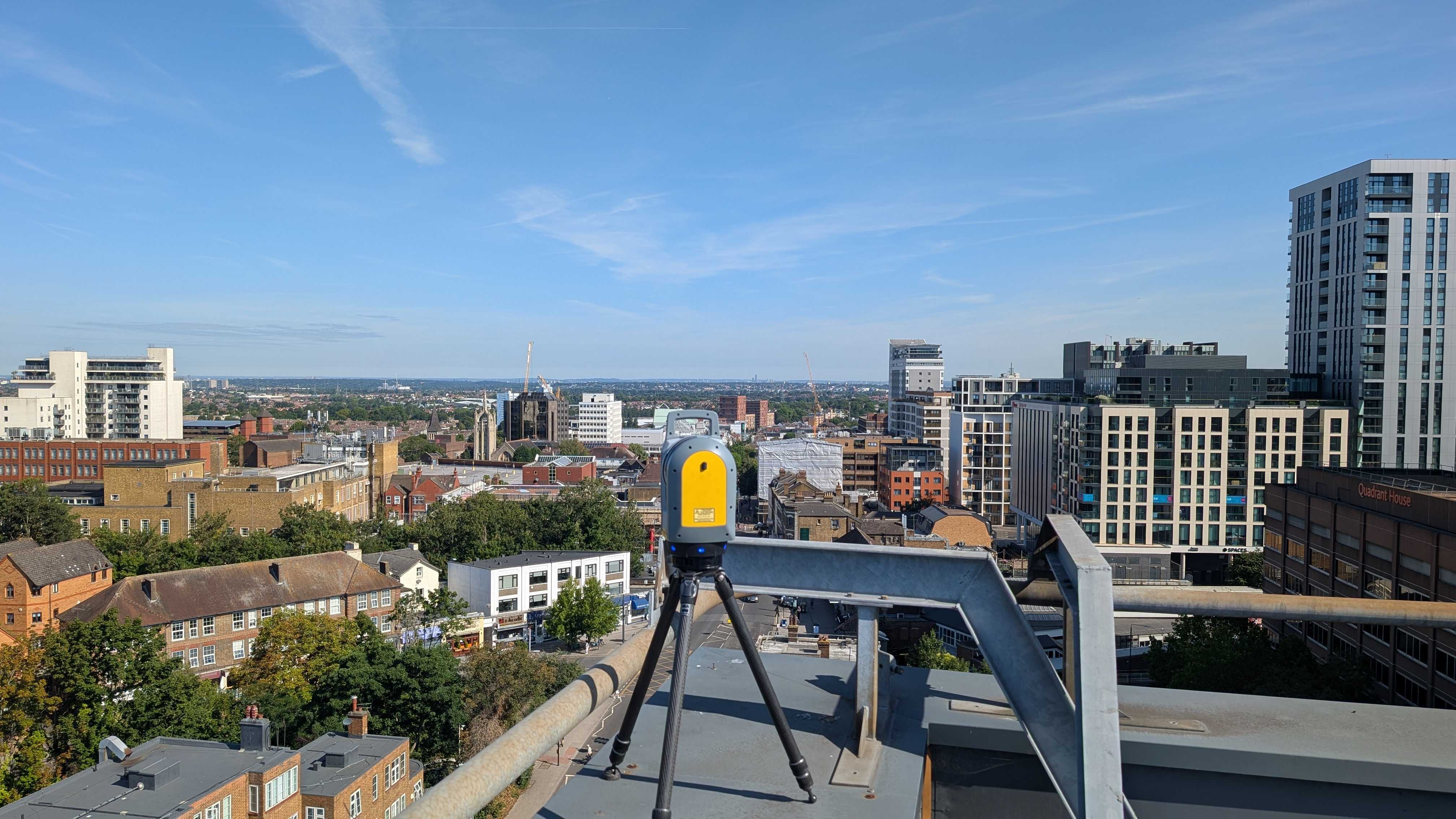Accidentally hitting hidden pipes or cables can cause safety issues, create project delays, and end up having a negative effect on your project budget.
This blog covers the definition of Ground Penetrating Radar surveying, the role it plays in utility detection, and our aim is to equip professionals with insights and strategies to ease the pain points that have threatened utility maintenance projects.
Understanding The Challenges
From unexpected utility clashes to safety concerns, project delays, and budget headaches, construction projects are often a stressful place to be.
When a utility is disburbed, many of these nightmares can become reality.
- Unplanned Utility Damage
Accidentally disturbing underground utilities during construction can lead to major issues. Imagine digging for a project and suddenly hitting a gas pipe or an electric cable. This not only puts people at risk but also causes the project to halt, causing stress and adding to cost concerns.
- Safety Hazards
Hitting hidden utilities can be dangerous for all those working on your project. Accidentally cutting a live wire or disturbing a gas pipe can cause major concern to not only health and safety on site, but the health and safety of the public.
- Project Delays
When construction projects slow down, it's usually because of unexpected problems like hitting utilities. This delay can mess up the whole plan and make everyone frustrated, which ultimately leads to further issues.
- Budget Overruns
Money matters, and unexpected utility issues can cost a lot. If a project takes longer or if there's damage, it means spending extra money from your tight budget.
The Role Of GPR In Utility Detection
Now that we've identified the challenges, it's time to introduce the solution: Ground Penetrating Radar (GPR)
Unlike digging or drilling, which can be invasive and risky, GPR uses radio waves to take images of entities below ground level without digging up the soil. Once the survey results have been detected, the image can be crossed referenced against a topographical survey to ensure it's clear what the utility is below the surface.
So, what are the benefits of GPR in Utility Detection?
- Accuracy
GPR can pinpoint the exact location of pipes, cables, and other utilities, ensuring you know exactly where they are, which can then be further investigated.
- Efficiency
GPR works quickly, providing you an image on site, saving valuable time on projects.
- Non-Destructive Nature
Unlike traditional digging or drilling, GPR doesn't harm the ground.
Tips for Effective GPR Utility Detection
Now that we've introduced the qualities of Ground Penetrating Radar (GPR), let's explore some tips to make the most out of this powerful tool for utility detection.
- Proper Planning
Identify the specific goals of your utility detection, mark the areas of concern, and establish a clear strategy for implementing GPR.
A well-thought-out plan ensures that GPR is utilised to its full potential, minimising surprises during the project.
- Professional Training
Ensure that the individuals handling GPR equipment are well-trained professionals, such as those at Intersect Surveys.
Proper training on how to interpret the images provided enhances the accuracy of the results and reduces the chances of misinterpretation.
- Integration with Other Technologies
Explore how GPR can work hand-in-hand with complementary tools and techniques, such as topographical surveying, to provide a more comprehensive understanding of underground structures.
Integration allows for a more thorough and accurate utility detection process.
Conclusion
In wrapping up, we've explored how Ground Penetrating Radar (GPR) stands out as a crucial solution for the challenges faced in construction and utility work.
GPR proves itself as a dependable tool, addressing issues like unplanned utility damage, safety hazards, project delays, and budget overruns.
By offering accuracy, efficiency, and safety without causing damage, GPR becomes an indispensable asset in utility detection.
In essence, GPR is not just a tool but a game-changer, reshaping the approach to understanding what's beneath the surface. If you think your project would benefit from a GPR survey, make sure to get in touch with a member of our team today.
FAQs
Why Is Utility Detection Crucial In Construction And Utility Maintenance?
Utility detection is crucial to prevent unplanned utility damage, ensuring safety, avoiding project delays, and controlling budget overruns. Accurate knowledge of underground utilities is fundamental for successful construction projects.
How Does Ground Penetrating Radar (GPR) Contribute To Utility Detection?
GPR uses radar waves to provide a non-invasive, accurate, and efficient way of mapping underground utilities. It acts as a precise GPS for what's beneath the surface, helping professionals locate and identify pipes, cables, and other hidden structures.
What Challenges Can GPR Help Overcome In Utility Detection?
GPR assists in overcoming challenges such as interpreting complex data and navigating intricate environments. Its adaptability and accuracy make it a valuable tool in addressing the nuances of utility detection, ensuring effective results.
How Can Professionals Enhance GPR Utility Detection Efficiency?
Effective planning, professional training for operators, and integration with other technologies are key. Planning ensures a clear strategy, training ensures accurate operation, and integration complements GPR's capabilities for a more comprehensive utility detection process.
Is GPR Suitable For All Types Of Terrains And Environments?
While GPR excels in various terrains, it's essential to adapt scanning parameters and consider additional technologies in complex environments. GPR's versatility allows it to navigate and provide reliable data in a wide range of settings, making it a valuable asset in utility detection.








